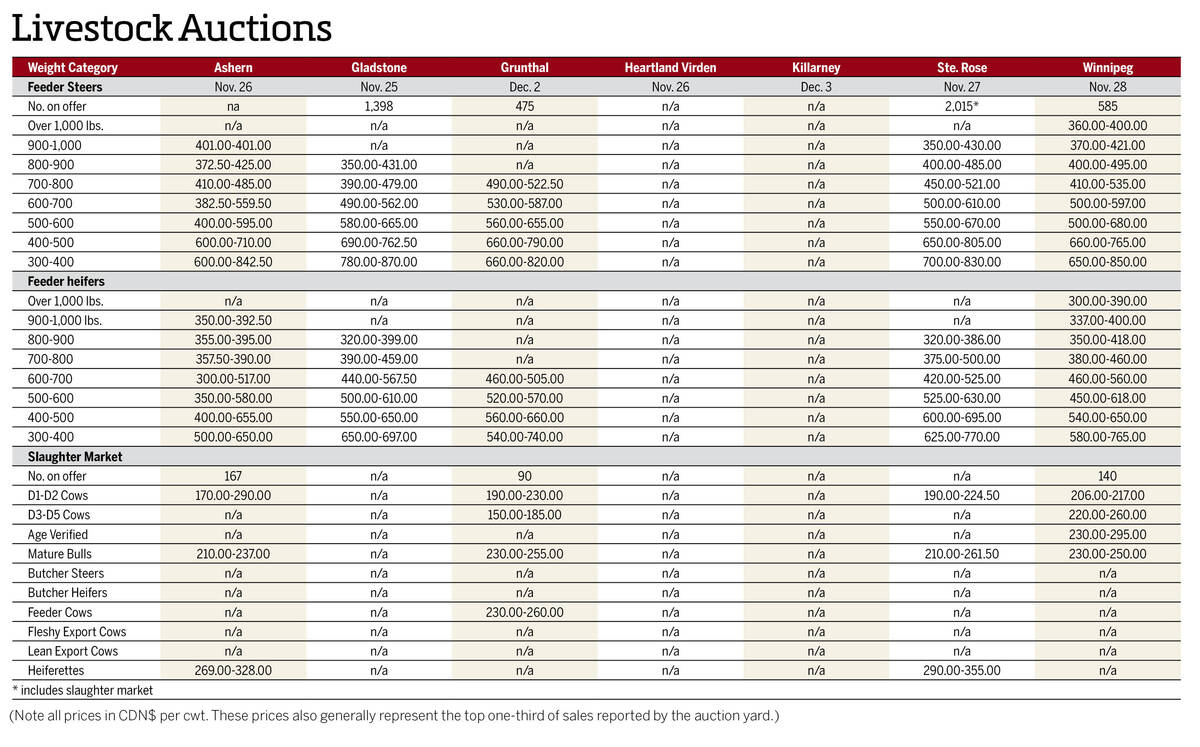ICE Futures canola contracts ran into resistance during the week ended June 11, repeatedly trying and failing to continue the short-covering rally that had boosted prices off of nearby lows to start the month.
Intermonth spreading was a feature, accounting for heavy volumes on occasion, as traders rolled out of the nearby July contract into the new-crop November. July ran into resistance at $470 per tonne, while November consistently tested $473 but was unable to break higher.
Conflicting outside influences of the Canadian dollar and Chicago Board of Trade soyoil largely cancelled each other out from a crush margin standpoint. Earlier in the week the currency hit its best level since before the COVID-19 pandemic, which put some pressure on canola, but dropped sharply on June 11 as optimism over the economic recovery faded.
Read Also

Manitoba cattle prices, Dec. 3
Cattle prices from Manitoba’s major livestock auction marts during the week Nov. 25-Dec. 2, 2025.
Soyoil saw a similar pattern, also hitting its best levels since early March before some bearish stocks data triggered a sell-off.
The U.S. Department of Agriculture pegged soyoil ending stocks for 2020-21 at two billion pounds, up by 135 million pounds from the May estimate and well above average trade estimates.
The updated soybean estimates from USDA elicited a largely neutral response, although with a slight increase in old-crop U.S. ending stocks and a slightly tighter new-crop carry-out.
Wheat stood out in the data, with USDA forecasting record-high world wheat ending stocks for 2020-21 of 316.1 million tonnes. That was up from the May estimate and came as a surprise to many traders who had anticipated a downward revision. Improving crop prospects in a number of wheat-growing regions of the world — including Australia, which is expected to see a sharp jump in wheat production after last year’s drought — will keep attention on weather conditions around the world going forward.
Canola should also start trading off of the weather on a day-to-day basis over the growing season.
Seeding operations have generally wrapped up across the Prairies, with wet areas of northern Alberta still facing some delays. Eastern Manitoba was also hit with heavy rains, raising some concerns there.
Meanwhile, other parts of Saskatchewan and Manitoba could soon use some moisture.
Beyond the weather, the Canadian market will also continue to take direction from the larger movements in the world grains and oilseeds. The financial markets also remain far from stable as economies take their first shaky steps of reopening in the midst of the ongoing pandemic.
















